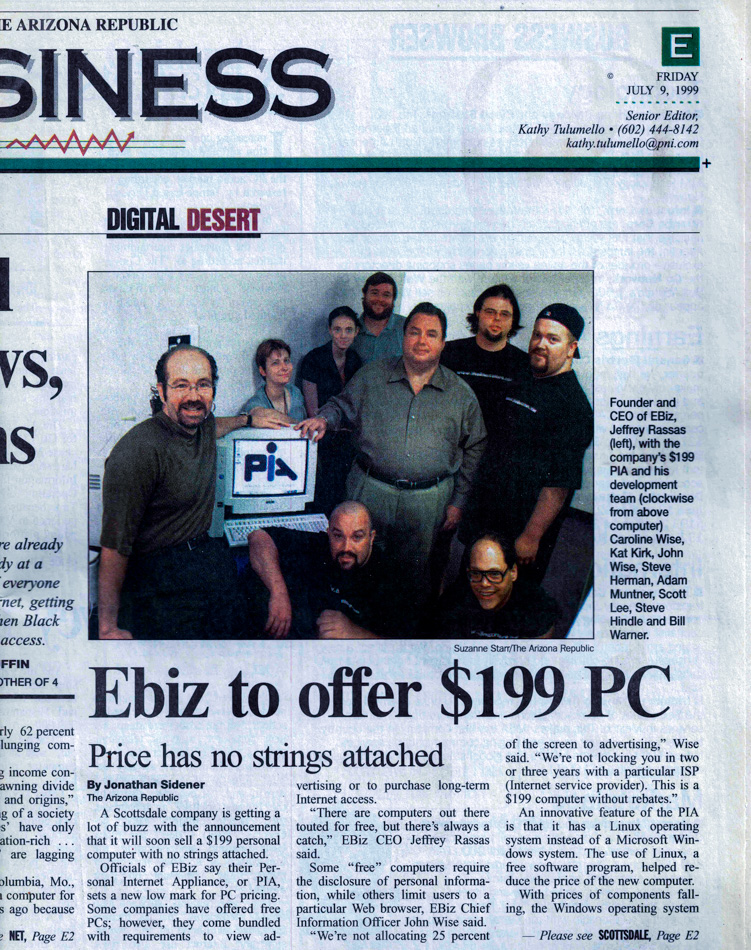
Somewhere during 1998, I joined a company called CPU Micromart in Scottsdale, Arizona, as a consultant. Soon I was their Chief Information Officer and often acted as their Chief Technology Officer too. It was a startup, so I was able to wear many hats. This company, founded by Jeffrey Rassas and Stephen Herman, was liquidating equipment they were able to purchase from companies such as Digital Equipment Corporation and a host of other businesses trying to shed inventory. Around the time I was joining, the guys were embarking on building what was then known as “white boxes,” effectively no-name PCs that could be branded by chains such as Fred Meyer, one of their resellers.

After Caroline left a gig with Intel, I hired her to help with CPU Micromart’s first line of business, online sales. We needed a shopping cart, and the options in 1998 weren’t all that good, so she wrote one for the company in Coldfusion. While she was working on that, I was looking at trainloads of old games in the warehouse and a few hundred old DEC Alphas that weren’t operable. Trying to source parts and figure out an operating system for those slim computers with powerful CPUs, I started looking at Red Hat Linux along with some utilities and figured we could sell them cheap. This inspired Jeff and Steve to take inspiration from another manufacturer who was building cheap clones and try to beat them. The $199 PIA (Personal Internet Appliance) seen above in the Arizona Republic back on July 9, 1999, was that machine.
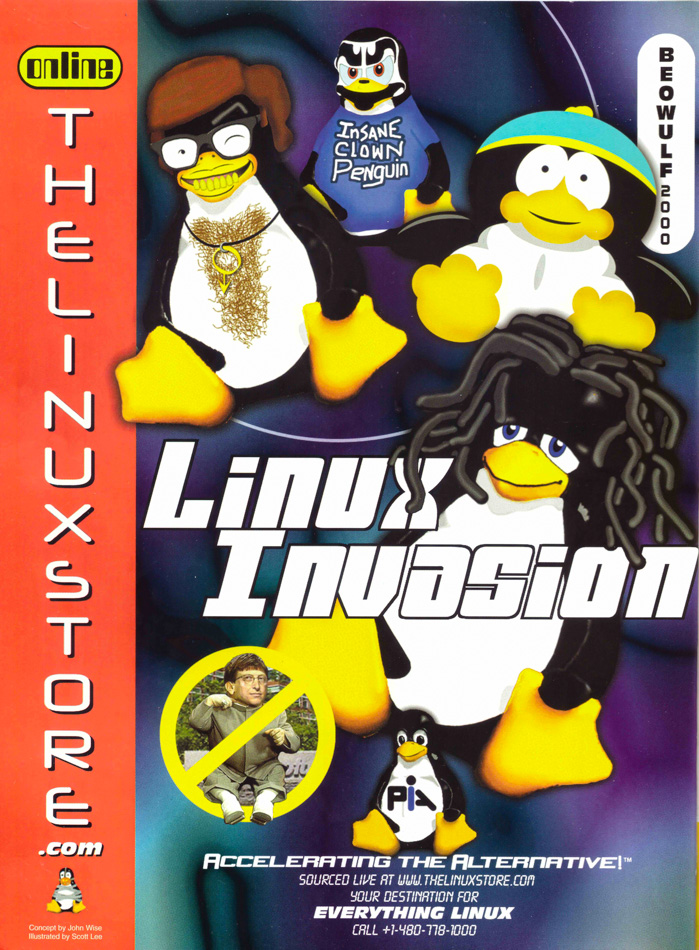
That inexpensive PC attracted a lot of attention for the company, which also brought it some investment money. With AMD and Red Hat Linux onboard, we made a serious push into the Linux market with www.thelinuxstore.com. Cheap Linux boxes, though, were not what I had my eye on; I just needed those to generate enough business so I could spearhead my dream project: the NEBULA. The New, Element-L, Beowulf, Unified, Linux, Array were going to change the world.
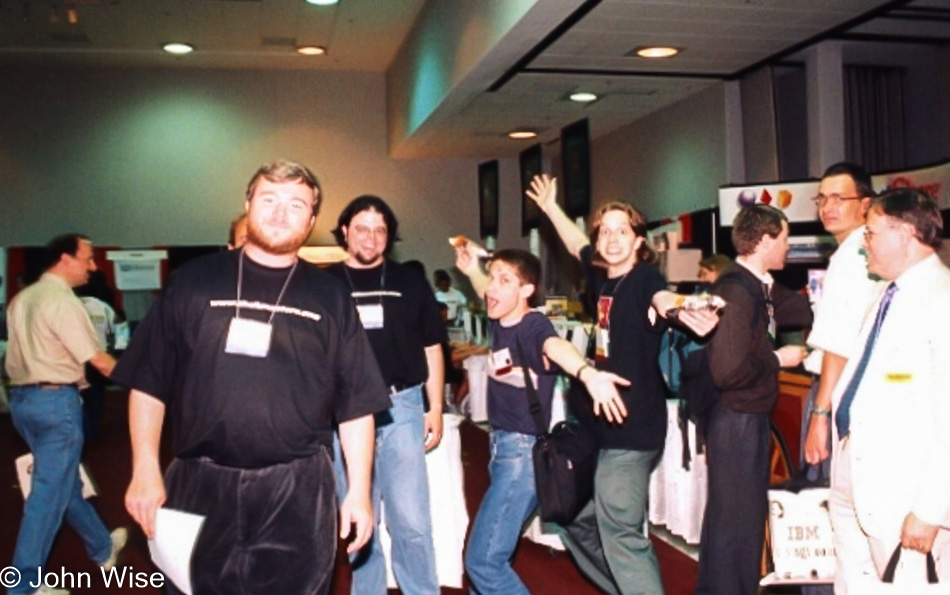
We launched our cluster at the 1999 Linux Expo in Raleigh, North Carolina, to great applause and media recognition that did wonders for the shareholders of Ebiz Enterprises. With the help of IBM, who was showing their own $250,000 cluster and were impressed with our effort that was going to retail for only $13,000, they offered us some tips that took our setup to the point where our system achieved half the speed of their machine instead of only a third. This project would have never gotten off the ground were it not for the tremendous effort of two people I hired for the project, Kat Kirk and Adam Muntner. In the photo above, that’s Adam just behind me with Miguel de Icaza and Federico Mena, creators of Gnome, offering us a bit of fanfare.
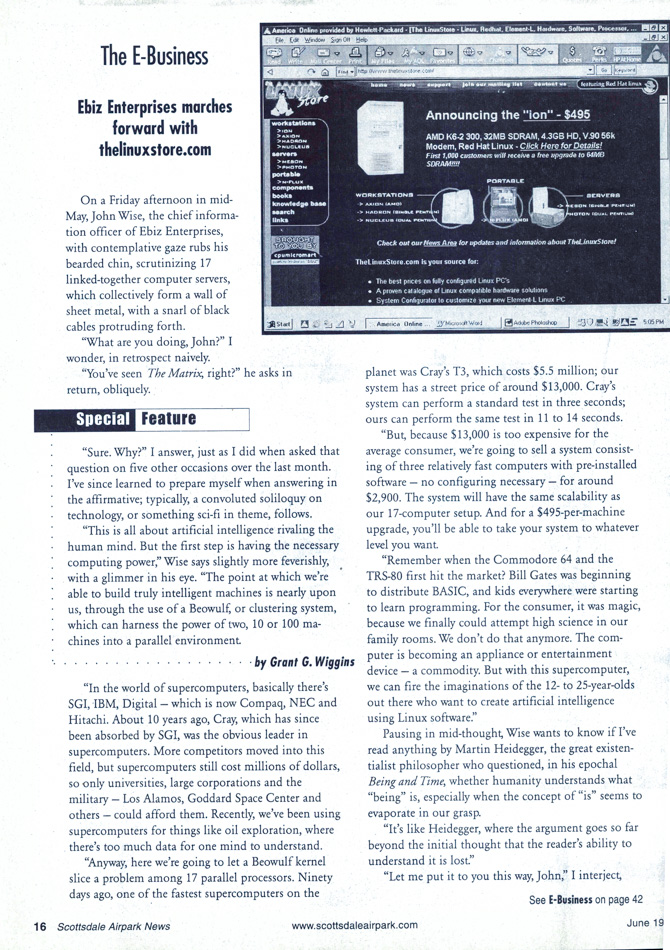
It was during this time I met Grant Wiggins, who interviewed me for the Scottsdale Airpark News, a local magazine. Grant would go on to work with us later in the year at Alienzoo. These two pages are from that interview.
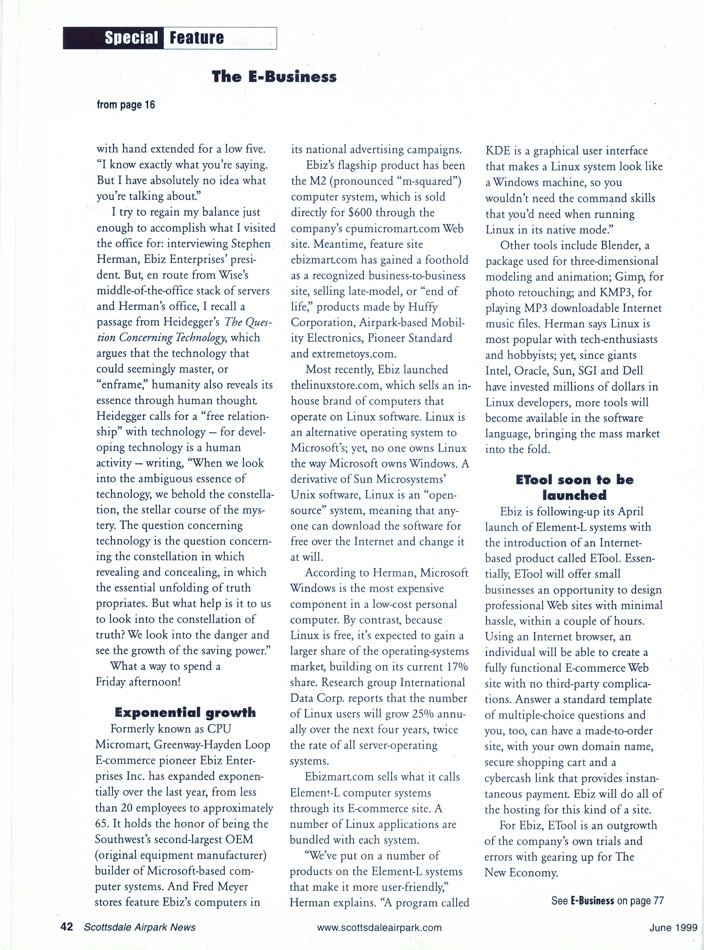
Sadly, I left the company before the end of the year due to differences of opinion on how to advance the company, but thanks to my momentary “star” power, I was able to raise capital for my next venture: Alienzoo. Unfortunately, the temporary golden child wasn’t able to deliver twice in a row.